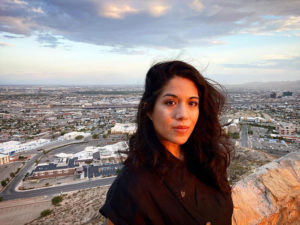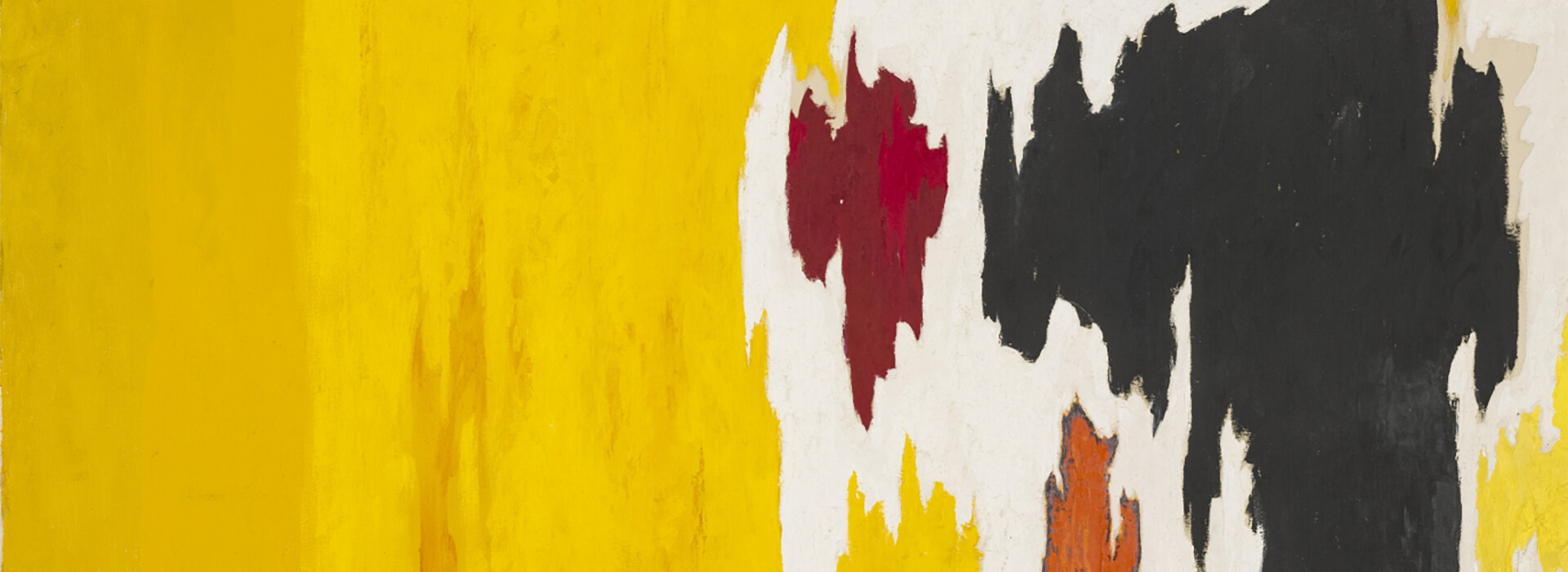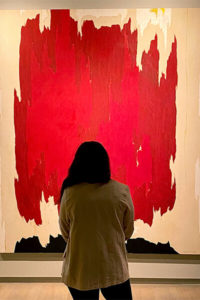At the time, I was at a crossroads: rounding out four years at my liberal arts institution, preparing to graduate that May with no plan, and wondering what the future had in store for me. I did not start the painting “thinking” my way into it—but instead “feeling” into it—attempting to express the confusion, overwhelming uncertainty, yet, tempered excitement I felt at the time. The oil medium with red, black, white, and yellow hues, and jagged textures felt the only way to let them out onto the board.
Years later, I still hold great affinity for Still’s pieces, I’m sure, partly due to how connected to him I felt that day. A recent visit to the Clyfford Still Museum reconnected me with his work at a similarly pivotal time.
The last year has been wrought with change and anxiety for most of us, as we navigate the global pandemic, forced social separation, and economic and political turmoil. In the middle of this year, I left NYC at the peak of COVID-19 ravaging the city, jumped from Austin, Denver, and California, with work remote indefinitely, and am still looking for when it will feel safe to be in one place again. Amidst this, on a personal note, I was diagnosed in adulthood with attention-deficit/hyperactivity disorder (ADHD). This discovery has led me to now re-assess everything from past decisions, my daily actions, to what this means for my future.
This visit to the Museum served as a moment of ease and caused me to reflect on why Still’s work has a calming effect on me. As I walked around the different rooms of The Late Works exhibition, I’d pause in front of one and feel like a comforting hand had been placed on my shoulder, signaling, “it’s okay.” I wanted to explore why.
Part of this ease, I believe, comes from freeing myself of judgement I’ve felt toward myself with ADHD, feeling more at home, sometimes, in an abstract painting like Still’s, than day-to-day minutiae that can be modern living. The diagnosis has had me reflect on how my brain works, lean into what clicks for it easily, and more closely consider what doesn’t. I have begun to allow myself to tune in more when something feels “easy” for me and to follow where that leads me, versus resisting it to follow what I “should” be doing. Revisiting Still’s work with this new perspective was one of these moments that felt easy.
While each of Still’s pieces is open to viewers’ interpretations, to me Still’s work is grounding. Its size and scope—its effect when you walk into a room, and a wall of red, blue, yellow, or other bold colors from a piece washes over you—can create a feeling of envelopment and tune out anything other than what is in that moment. Still’s intention for people to lead with their feelings and react to the work, rather than “think their way” into understanding some concrete meaning mirrors what I have been trying to do more in these recent months: lean into following what feels right and acknowledge that, even though an order may not be clearly laid out, I can sense it there. I’ve realized this is how ADHD has manifested in my life: sometimes others couldn’t see the order in how I conducted work, school, and everyday tasks—yet somehow to me, the hodgepodge rhythm made sense. A lack of focus is at the core of what my diagnosis is supposed to mean, yet focus is exactly what Still’s work makes me feel more enabled to do: focus on the right things.


